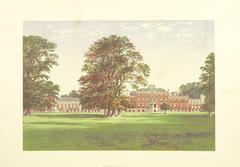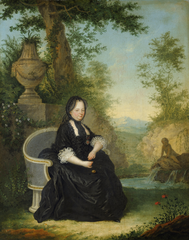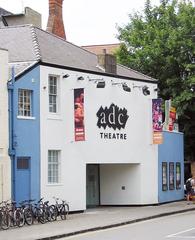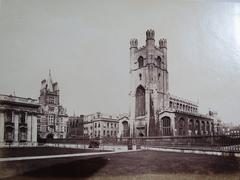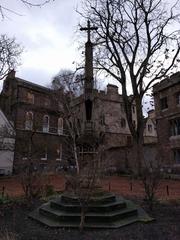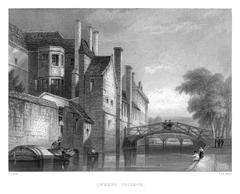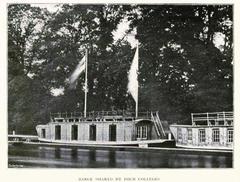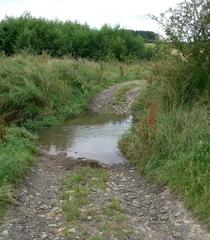
Wimpole Hall: Visiting Hours, Tickets, and Historical Sites in Cambridgeshire
Publication Date: 18/07/2024
Introduction to Wimpole Hall
Wimpole Hall, located in the idyllic Cambridgeshire countryside, is a testament to England’s rich historical tapestry. This grand estate, now under the stewardship of the National Trust, offers visitors a unique journey through time, tracing its origins back to the 12th century. Initially a fortified manor house, Wimpole Hall has evolved over the centuries, reflecting the architectural and cultural shifts of each era. From the Chicheley family’s significant renovations in the 16th century to the expansive transformations under the Harley family in the 18th century, each chapter of Wimpole Hall’s history adds to its allure (Wimpole Hall - National Trust).
The estate’s landscape, shaped by the renowned Capability Brown, further enhances its historical significance. Brown’s vision for a naturalistic landscape, characterized by sweeping lawns and strategically placed trees, remains a highlight of the estate today. Visitors can explore this captivating blend of natural beauty and human artistry, along with the grand interiors designed by architects like James Gibbs and John Soane (Explore Wimpole Hall - National Trust).
Contents Overview
- Early Beginnings (12th - 16th Century)
- The Rise of the Cutts Family (17th Century)
- Transformation under the Harley Family (18th Century)
- The Yorke Dynasty (19th - 20th Century)
- Wimpole Hall Today - A National Trust Treasure
- Visiting Wimpole Hall
- Visiting Hours
- Tickets
- Travel Tips
- Nearby Attractions
- Accessibility
- Special Events and Tours
- Photographic Spots
- Conclusion
- Frequently Asked Questions (FAQ)
Early Beginnings (12th - 16th Century)
The earliest records of Wimpole date back to the 12th century, mentioning a fortified manor house on the site. Over the next few centuries, the estate changed hands several times, witnessing periods of expansion and development.
By the 16th century, Wimpole was under the ownership of the Chicheley family. Sir Henry Chicheley, a prominent figure who served as Lord Chancellor under King Henry V, played a pivotal role in establishing the family’s influence. The Chicheleys undertook significant renovations, transforming the medieval manor into a more comfortable residence befitting their status.
The Rise of the Cutts Family (17th Century)
In 1632, Wimpole was acquired by Sir John Cutts, marking the beginning of a new era for the estate. Sir John, a prominent Parliamentarian during the English Civil War, further expanded the house, reflecting the architectural trends of the time.
His descendant, John Cutts, 1st Baron Cutts of Gowran, inherited Wimpole in the late 17th century. Lord Cutts, a renowned soldier who fought alongside the Duke of Marlborough in the War of the Spanish Succession, is credited with adding the impressive stable block, a testament to his military background and love of horses.
Transformation under the Harley Family (18th Century)
The early 18th century saw Wimpole undergo its most dramatic transformation when it was purchased by Edward Harley, 2nd Earl of Oxford and Mortimer, in 1709. Harley, a renowned bibliophile and art collector, envisioned Wimpole as a grand country retreat reflecting his refined tastes.
He commissioned the renowned architect James Gibbs to remodel the house extensively. Gibbs, known for his Palladian style, retained the existing structure’s core while adding two grand wings, a majestic entrance hall, and a stunning library to house Harley’s vast collection of books and manuscripts.
Harley’s daughter, Margaret Cavendish Harley, married William Bentinck, 2nd Duke of Portland, bringing Wimpole into the possession of the Bentinck family. The Duke, a prominent Whig politician, continued to enhance the estate, commissioning Capability Brown, the celebrated landscape architect, to redesign the parkland. Brown’s work at Wimpole, characterized by sweeping vistas and naturalistic planting, remains a highlight of the estate today.
The Yorke Dynasty (19th - 20th Century)
In 1740, Philip Yorke, 1st Earl of Hardwicke, purchased Wimpole, ushering in a period of Yorke family ownership that would last for over two centuries. The Yorkes, a prominent political family, made Wimpole their family seat, undertaking further alterations and additions to the house and gardens.
Philip Yorke III, 3rd Earl of Hardwicke, made significant contributions to Wimpole’s development in the late 18th and early 19th centuries. He commissioned the architect John Soane to remodel the interiors, resulting in the elegant and refined spaces visitors can admire today. He also expanded the estate’s landholdings, acquiring neighboring farms and villages.
The Yorkes continued to reside at Wimpole throughout the 19th and early 20th centuries, leaving their mark on the house and its collections. However, the rising costs of maintaining such a grand estate took their toll. In 1938, faced with mounting death duties, the family made the difficult decision to give Wimpole Hall and its surrounding 1,850 acres to the National Trust.
Wimpole Hall Today - A National Trust Treasure
Since coming under the stewardship of the National Trust, Wimpole Hall has been meticulously preserved and opened to the public. The Trust has worked tirelessly to conserve the house, its collections, and the surrounding parkland, ensuring that future generations can continue to enjoy this historical gem.
Visiting Wimpole Hall
Visiting Hours
Wimpole Hall is open to visitors year-round. However, visiting hours can vary depending on the season and specific events. It is recommended to check the National Trust’s official website for the most up-to-date information on opening times.
Tickets
Tickets can be purchased online or at the entrance. Prices vary for adults, children, and families, with discounts available for National Trust members. Group bookings and guided tours can also be arranged in advance (National Trust’s ticketing page).
Travel Tips
Wimpole Hall is located in Cambridgeshire, easily accessible by car and public transport. Parking is available on-site, and there are designated areas for coaches. For those using public transport, local buses run regularly from Cambridge and Royston.
Nearby Attractions
While in the area, visitors can explore other historical sites such as Anglesey Abbey, Ely Cathedral, and the charming city of Cambridge itself. The surrounding Cambridgeshire countryside also offers picturesque walking and cycling routes.
Accessibility
Wimpole Hall is committed to providing an accessible experience for all visitors. The estate offers wheelchair access to most areas, with accessible routes clearly marked. Assistance dogs are welcome, and there are facilities for visitors with disabilities.
Special Events and Tours
Throughout the year, Wimpole Hall hosts a variety of special events, including historical reenactments, garden tours, and seasonal celebrations. Guided tours offer deeper insights into the estate’s history, architecture, and collections, making for an enriching visit.
Photographic Spots
Wimpole Hall’s picturesque setting provides numerous opportunities for photography, from the grand interiors to the beautifully landscaped gardens. Popular spots include the South Front, the Walled Garden, and the stunning vistas designed by Capability Brown.
Conclusion
Wimpole Hall stands as a testament to the evolving architectural tastes and lifestyles of the families who called it home. From its medieval origins to its current status as a cherished National Trust property, Wimpole’s journey through time offers a captivating glimpse into English history. Plan your visit today to explore this remarkable estate, and don’t forget to follow us on social media for the latest updates and events!
FAQ
What are the visiting hours for Wimpole Hall?
Visiting hours vary by season and event. Check the National Trust website for the most current information.
How much are tickets to Wimpole Hall?
Ticket prices vary for adults, children, and families, with discounts for National Trust members. Purchase tickets online or at the entrance.
Is Wimpole Hall accessible?
Yes, Wimpole Hall provides wheelchair access to most areas and has facilities for visitors with disabilities.
Are there guided tours available?
Yes, guided tours can be arranged in advance and offer deeper insights into the estate’s history and architecture.
